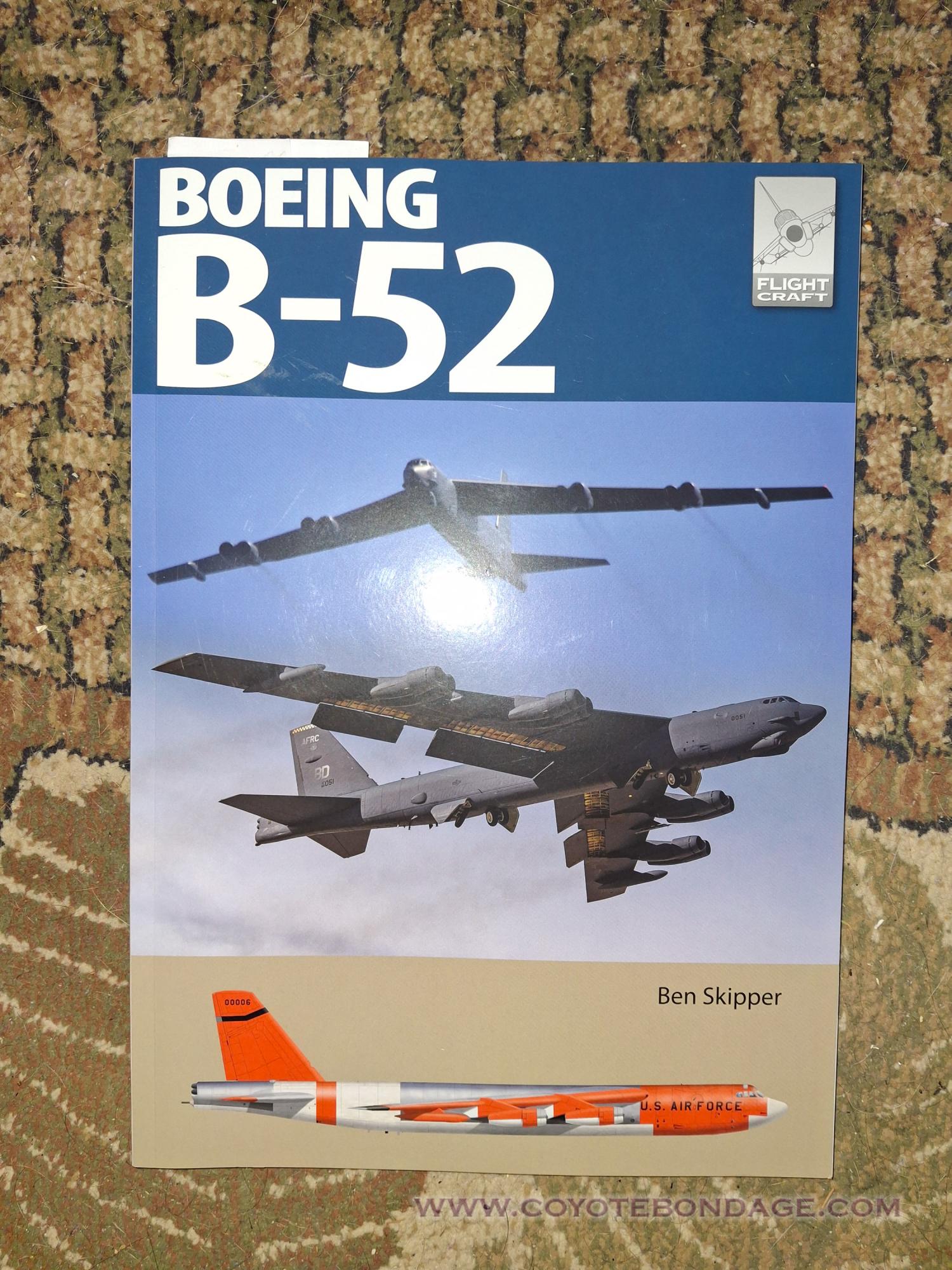Boeing B-52
Illustrations: 50 colour illustrations, 50 mono illustrations
The YB-52, one of two prototypes of the B-52, first flew on October 2, 1952. Little did anyone at Boeing or in the U.S. Air Force conceive that later models of the B-52 would still be flying over 70 years later! A total of 744 B-52s, of 8 different models, were produced by Boeing, with the last one, a B-52H, being rolled off the assembly line on October 26, 1962.
Written by Ben Skipper, this book does an excellent job of covering the B-52 (also known as the “BUFF”), including a modeler’s section. There are 100 pictures, and 24 full-color side views of various B-52s from the A models up to the current operational B-52Hs.
The BUFF’s protracted development, begun on February 13, 1946, would see the design evolve from a piston-driven aircraft, through a turboprop-powered stage, and finally using J-35s to power the aircraft. Boeing and the Air Force finally settled on the Pratt & Whitney J-57. Amazingly, the design of what we would recognize as the B-52 was created over a weekend in Ohio. With refinements, this design would lead to the production of B-52s.
Each variant of the BUFF is covered, including the XB-52 and YB-52. The differences between each variant are pointed out, including bomb load changes and Electronic Counter Measures (ECM). Also covered are one-of-a-kind modified BUFFs used for testing and research.
Of great interest to modelers is a section devoted to reviews of kits and aftermarket items of the BUFF. There are several limited-run kits in the popular 1/48th scale. These kits may now be hard to find, and would be enormous once built. HPH’s kit, in particular, is loaded with fine detailing on the interior sections.
Monogram/Revell has dominated the 1/72th scale market with their venerable B-52D kit. Originally released in 1968, the kit included a battery-powered “jet engine sound” mechanism inside it. Interestingly, the on/off switch for the sound generator was on the left side of the nose!
Several other kits have been released in 1/72th scale, notably from Italeri and AMT. Both companies have produced kits of the B-52G and H models. Both of Italeri’s B-52G offerings are covered in the modeler’s section. Both builds are excellent, and one showcases the Black Dog.cz aftermarket detail set. Mention is also made of several kits from Modelcollect of both the G and H variants.
The B-52 is also produced in 1/144th scale, with selections from Academy, Great Wall, and Minicraft. The D, G, and H BUFF variants are represented in kits from these manufacturers.
In 1/175th scale, Aurora has reissued what may be the oldest kit of the B-52. This kit, by Revell, first appeared in 1954 and contained an X-15 rocket under the right wing.
Overall, I thoroughly enjoyed this book and both the developmental and operational history of the BUFF. Especially interesting is the modeler’s section of the book, showing how the kits look when completed. I highly recommend this book.
Thanks go out to Casemate for providing my review sample.





Comments
Add new comment
This site is protected by reCAPTCHA and the Google Privacy Policy and Terms of Service apply.
Similar Reviews